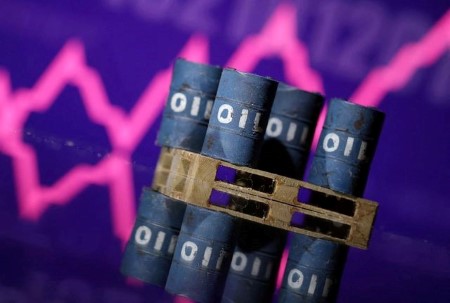NEW YORK – US Treasury prices fell on Wednesday, pushing yields to multi-week highs, as investors grew concerned about growing disagreements on the Trump administration’s tax cut and budget legislation currently in Congress.
Benchmark US 10-year Treasury note yields hit a six-week high, punching through a key 4.5% support level. It was last up 3.7 basis points (bps) at 4.536%.
On the front end of the curve, the two-year yield, which typically moves in step with interest rate expectations, rose 4.2 bps to 4.059%, after earlier touching its highest since late March.
Republicans in the US Congress on Wednesday advanced elements of President Donald Trump’s sweeping budget package after a debate that lasted through the night, as a key committee voted along party lines to approve tax cuts that would add trillions of dollars to the US debt.
The House of Representatives Ways and Means Committee approved the first version of the tax cut bill, but a clearer picture of the size of future budget deficits depends on discussions of spending and potentially steep cuts to the Medicaid health program.
“I’m optimistic that Congress can approve some spending cuts, a lot of Republicans are keen to reduce the size of the state,” said Kim Rupert, managing director, global fixed income analysis, at Action Economics in San Francisco.
If the budget bill shows some control over the debt, the fears may be overblown and yields would not have to go higher, Rupert added.
A closely watched part of the US Treasury yield curve measuring the gap between yields on two- and 10-year Treasury notes, seen as an indicator of economic expectations, steepened to 48.1 bps, compared with 46.3 late on Tuesday. The curve has steepened for a second straight day.
Apart from worries about the budget bill, some analysts said higher Treasury yields could also be a reflection of diminishing fears of recession in the aftermath of the
90-day pause
in high tariffs between the US and China on Monday.
That should affirm expectations the Federal Reserve will take its time cutting interest rates in this current easing cycle.
Since the US-China tariff reprieve, markets on US rate futures have been betting that the Fed will cut twice this year, according to LSEG calculations, with the first easing likely happening in September with a roughly 70% probability.
Market participants will now look to Thursday’s new releases of retail sales and producer price index (PPI), which will show how Trump’s tariff policy affected inflation and consumption.
“Investors are looking for signs in the upcoming data releases of further inflationary pressures coming from tariffs”, said Tom di Galoma, managing director of rates and trading at Mischler Financial Group in Park City, Utah.
Some Treasury investors, meanwhile, have been diversifying fixed-income holdings out of the United States into Europe, with more supply coming this week from Germany and France, he added.
On Wednesday, Fed Vice Chair Philip Jefferson stressed the uncertainty surrounding the future path of inflation, including how persistent upward pressure from tariffs will be on prices.
“While trade policy has received the bulk of recent attention, I remain focused on the aggregate effect from the totality of different government policy changes, including trade, immigration, regulatory, and fiscal policies”, Jefferson said.
Walmart WMT.N earnings expected for Thursday may be important even for Treasury markets, Rupert of Action Economics noted, as the company’s numbers and comments may show how US consumers are reacting to tariffs and the extent to which companies are passing through higher costs.
(Reporting by Tatiana Bautzer; Editing by Rod Nickel, Gertrude Chavez-Dreyfuss and Diane Craft)







 DOWNLOAD
DOWNLOAD









